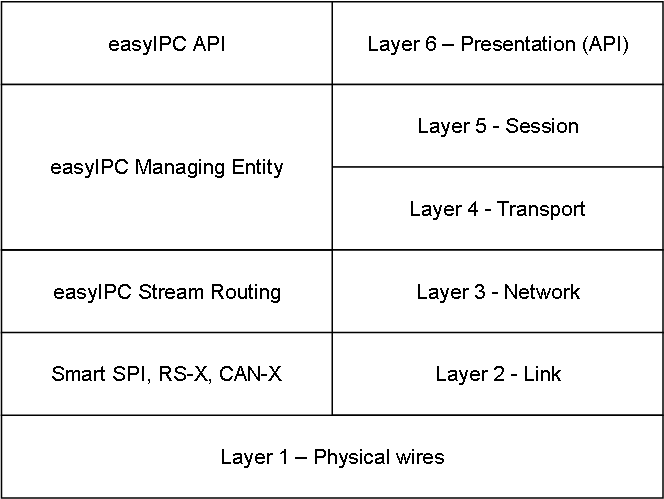I have written a lot about the intentions with easyIPC so it’s time we dig into the details of the protocol. easyIPC will follow the OSI model on a pragmatic level as illustrated below.
Smart SPI, RS-X and CAN-X are layer 2 links. Their only responsibility is to transport generic data between two nodes and maintain that link.
Stream routing is a small layer that will look-up DID & SID, replace them and forward messages either to a different Link or to an application.
Managing Entity is a database maintaining status over the tree of devices and it’s resources. This is the more complex part where we provide plug & play, dynamic resource allocation, redundancy and all the complex features in easyIPC.
The API is a thin layer interfacing easyIPC into various applications and programming languages. On Linux this will be running as a daemon (Service on Windows) with applications connecting as they start/stop. On an embedded device we use a tighter technique written in C/C++.
Watch out for updates on the doc pages.
